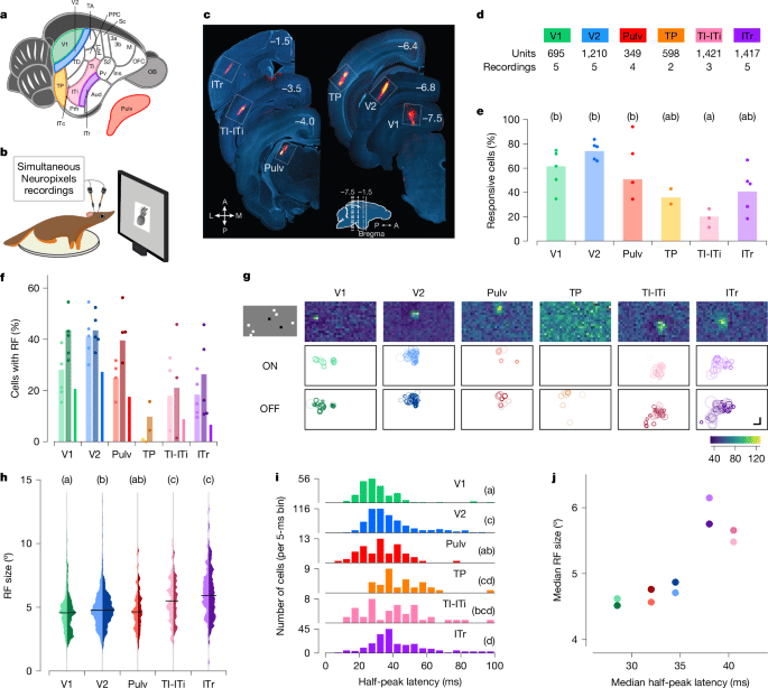Tree Shrew Brain Study Reveals Compact, Primate-Like Object Processing System
August 27, 2025
Compared with macaque IT, tree shrew V2 achieves higher object decoding performance, while primate IT exhibits greater overall hierarchical progression in explainable variance and reconstruction accuracy.
In object recognition tests with a large image set, TI-ITi shows higher object selectivity than V1/V2, indicating stronger high-level processing in temporal areas.
Naturalistic texture processing shows V2 as the most selective stage, with diminishing modulation in more anterior areas and possible feedback from V2 to V1 shaping texture responses.
A new study shows that tree shrew V2 supports a compressed, multi-stage ventral stream with early emergence of high-level object representations, including full object-space processing and strong face-selective cells.
These findings suggest that tree shrews have an earlier-bringing, primate-like object representation in a compact ventral-pathway hierarchy, with both similarities and differences in how faces and objects are represented across species.
The results support a compressed, multi-stage ventral stream in tree shrews and point to face- and object-selective representations that vary across regions like TI-ITi and Pulvita.
Researchers used large-scale Neuropixels recordings across six ventral-stream areas (V1, V2, TP, TI-ITi, ITr, Pulvinar) to map hierarchical visual processing in tree shrews.
Axis-model coding reveals ramp-shaped tuning along preferred axes in a DNN-derived feature space (AlexNet FC6) with flat tuning along orthogonal axes, signaling compact, axis-based representations across the ventral stream.
Orientation and spatial-frequency tuning follow primate/rodent patterns, with strongest orientation preferences in V1/V2 and more evident spatial-frequency tuning in anterior regions.
Summary based on 2 sources